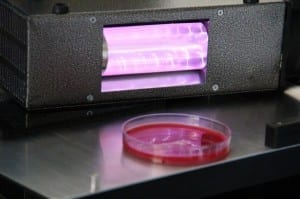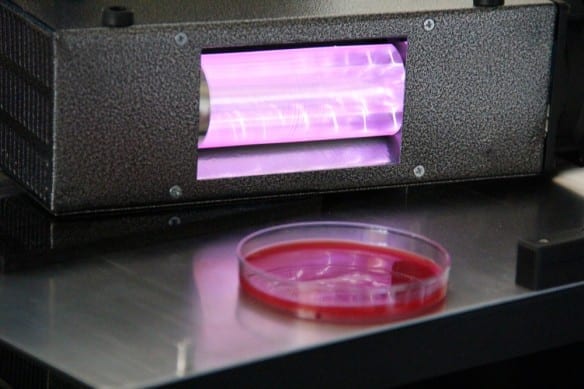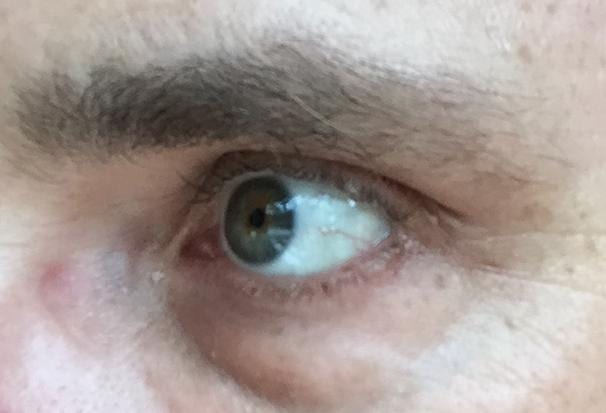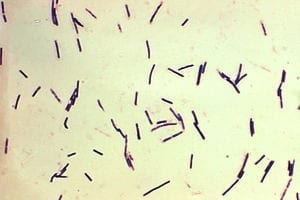
Destroys drug-resistant bacteria but safe for human exposure
Despite major efforts to keep operating rooms sterile, surgical wound infections remain a serious and stubborn problem, killing up to 8,200 patients a year in the U.S. A study by Columbia University Medical Center (CUMC) researchers suggests that narrow-spectrum ultraviolet (UV) light could dramatically reduce such infections without damaging human tissue. The study, conducted in tissue culture, was published today in the journal PLOS ONE.
Approximately 200,000 to 300,000 patients suffer surgical wound infections in the U.S. each year, accounting for $3 billion to $10 billion in health-care expenditures, the researchers report. Patients with surgical wound infections, compared with those without such infections, are 60 percent more likely to spend time in an ICU, are five times as likely to be readmitted to the hospital, have twice the mortality rate, have longer hospital stays, and have roughly double the total health-care costs.
Scientists have known for many years that UV light from a standard germicidal lamp (which emits a broad spectrum of wavelengths, from about 200 to 400 nanometers [nm]) is highly effective at killing bacteria; such lamps are routinely used to decontaminate surgical equipment.
“Unfortunately, this UV light is also harmful to human tissue and can lead to skin cancer and cataracts in the eye,” said study leader David J. Brenner, PhD, the Higgins Professor of Radiation Biophysics, professor of environmental health sciences, and director of the Center for Radiological Research at CUMC. “UV light is almost never used in the operating room during surgery, as these health hazards necessitate the use of cumbersome protective equipment for both surgical staff and patients.”
Dr. Brenner and his team hypothesized that a very narrow spectrum of UV light—around 207 nm—might be capable of destroying bacteria while leaving human tissue unaffected. Because UV light at this wavelength is strongly absorbed by proteins, it is expected to be safe for two reasons: At the cellular level, it cannot reach the nucleus of human cells, and at the tissue level it cannot reach the sensitive cells in the skin epidermis and the eye lens. But because bacteria are much smaller than human cells, this UV light can reach their DNA. “What this means is, if you shone 207-nm light on human skin or eyes, you would not expect to see any biological damage,” said Dr. Brenner, “but it should kill any airborne bacteria that land on a surgical wound.”
To test this hypothesis, Dr. Brenner and his colleagues exposed MRSA (methicillin-resistant S. aureus) bacteria, a common cause of surgical wound infections, and human skin cells to a krypton-bromine excimer lamp (also known as a KrBr excilamp), which emits UV light only at 207 nm, as well as to a standard germicidal UV lamp.
The researchers found that 207-nm UV light was as effective at killing MRSA bacteria as a conventional UV lamp. However, the 207-nm light resulted in 1,000-fold less killing of human skin cells than did the standard UV light.
Go deeper with Bing News on:
Surgical Infections
- Weight-loss surgery before kidney transplantation has benefits, study shows
Laparoscopic sleeve gastrectomy promotes relatively rapid weight loss, reduces obesity-related health issues and improves eligibility for kidney transplantation for patients with advanced chronic ...
- New HIV Infections After Vampire Facials at Unlicensed Spa
The cosmetic procedures took place at a spa performing microneedling facials using unsterile injection practices.
- Woman sues over alleged infections from op to remove breast implants
A woman who claims she ended up with multiple wound infections following surgery to remove silicone breast implants in 2015 has sued in the High Court. Communications manager Roisin Milmoe (42) told ...
- Medline sews up Ecolab’s surgical drape business for $950M
The hospital supply giant Medline is bolstering its presence in the operating room, with a plan to acquire Ecolab’s surgical solutions division at a price just shy of $1 billion. | The deal includes ...
- Global Urinary Tract Infection Treatment Industry
Global Urinary Tract Infection Treatment Industry to US$13.6 billion by 2034, fueled by new drug development | Reports By FMI ...
Go deeper with Google Headlines on:
Surgical Infections
[google_news title=”” keyword=”Surgical Infections” num_posts=”5″ blurb_length=”0″ show_thumb=”left”]
Go deeper with Bing News on:
Surgical wound infections
- How safe is your local hospital? Every Tampa Bay hospital graded
Leapfrog, an independent nonprofit, assesses hospitals on hand washing, infection rates, patient falls and other factors.
- Research team develop porous sponge material for enhancing kidney hemostasis and repair
A POSTECH research team have crafted a material aimed at swiftly staunching kidney bleeding and facilitating wound recovery. Their research featured in the online edition of Biomaterials.
- Novant NHRMC gets ‘B’ safety grade per new report
The 2024 results of a survey done by national watchdog organization Leapfrog Group shows Novant Health New Hanover Regional Medical Center earned a 'B' safety grade. READ MORE: Fed ...
- Spirit AeroSystems Whistleblower Dies After Sudden Infection
Joshua Dean, a former quality auditor at Boeing supplier Spirit AeroSystems who had flagged safety concerns and alleged misconduct by the aircraft manufacturer, died Tuesday after a sudden and severe ...
- New mobile phone app helps patients check on their own recovery
Post Op has been created by doctors and nurses working together with patients and external technology experts. The App enables patients to answer key questions about their recovery through mobile ...
Go deeper with Google Headlines on:
Surgical wound infections
[google_news title=”” keyword=”surgical wound infections” num_posts=”5″ blurb_length=”0″ show_thumb=”left”]











